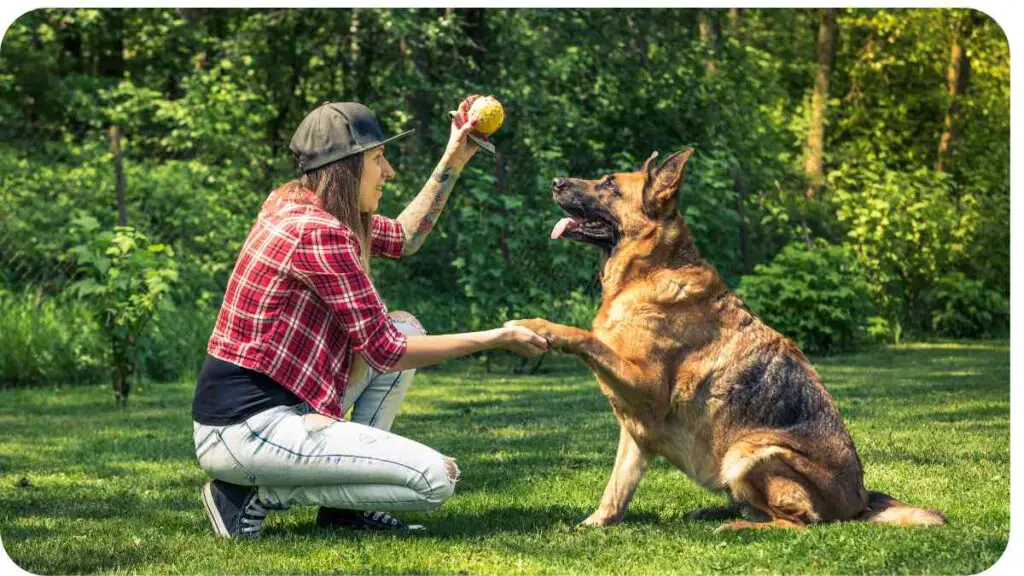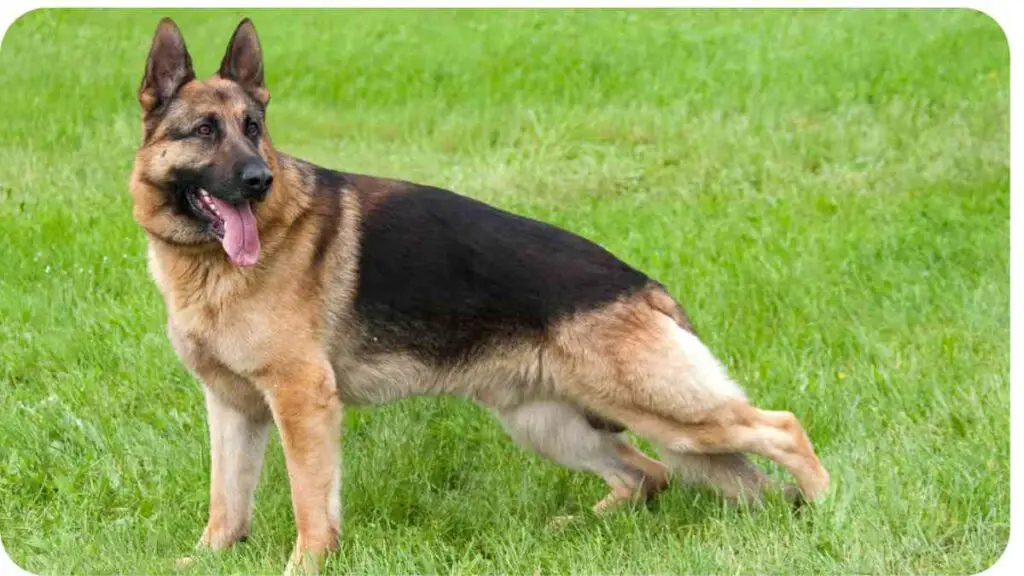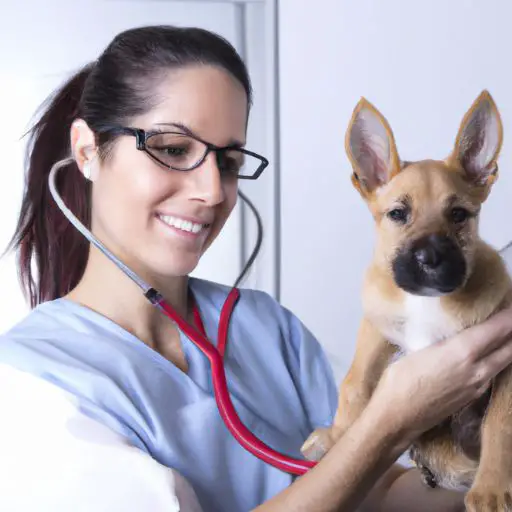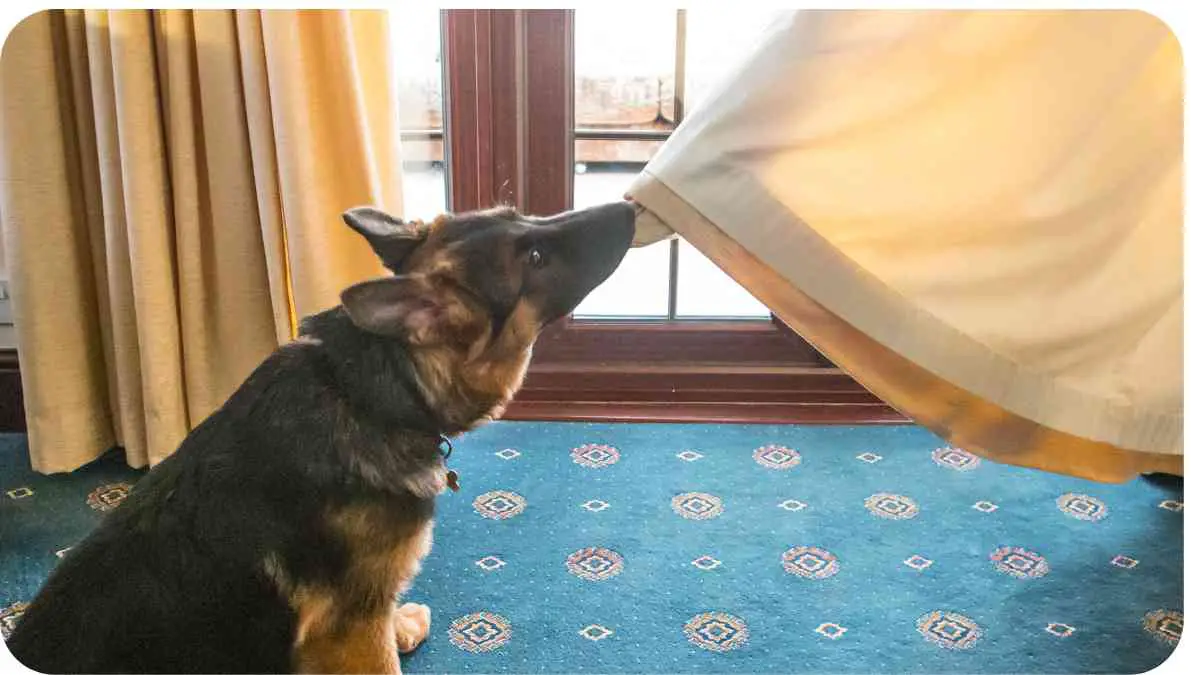Welcome to a comprehensive guide on understanding why German Shepherds sometimes exhibit biting behavior and how to address this common concern.
As a seasoned professional in the field of dog behavior, I bring a wealth of experience and expertise to help you navigate the complexities of your canine companion’s behavior.
| Takeaway |
|---|
| Understanding the instinctive nature of German Shepherds is crucial for addressing biting behavior. |
| Recognizing early signs of aggression and identifying triggers are essential steps in behavioral intervention. |
| Effective training techniques, including positive reinforcement, play a pivotal role in shaping a German Shepherd’s behavior. |
| Building a strong bond through daily activities and positive interactions contributes to a harmonious owner-dog relationship. |
| Providing a safe environment, socializing, regular exercise, and addressing health issues are integral for overall well-being. |
| Real-life case studies offer valuable insights into practical solutions for common biting behavior scenarios. |
| Consultation with professionals may be necessary for persistent or aggressive biting behavior in German Shepherds. |
Table: Overview of German Shepherd Behavior

| Aspect | Characteristics |
| Temperament | Intelligent, loyal, and protective |
| Common Behaviors | Barking, herding, and territorial instincts |
| Trainability | Highly trainable, responds well to commands |
| Potential Challenges | Aggression, territoriality, and biting |
The Instinctive Nature of German Shepherds
German Shepherds are known for their remarkable intelligence and loyalty. However, to truly understand their behavior, it’s crucial to delve into their instinctive nature.
German Shepherds exhibit remarkable compatibility with children, showcasing their gentle nature and protective instincts. If you’re considering a family pet, learn more about the harmonious relationship they can establish.
Table: Key Instincts and Their Implications
| Instinct | Implication in Behavior |
| Protective Instinct | May lead to aggressive behavior when threatened |
| Herding Instinct | Exhibits nipping behavior while herding |
| Territorial Instinct | Guarding behavior in familiar spaces |
| Prey Drive Instinct | May result in chasing or biting |
Recognizing Early Signs of Aggression
One of the first steps in addressing biting behavior is recognizing the early signs of aggression.
Table: Behavioral Indicators of Potential Aggression
| Indicator | Behavioral Signs |
| Body Language | Stiff posture, raised hackles |
| Vocalizations | Growling, barking with a low pitch |
| Warning Signs | Snapping, showing teeth |
| Withdrawal or Isolation | Seeking solitude when agitated |
Understanding Triggers for Aggressive Behavior
To effectively address biting behavior, it’s essential to identify the triggers that provoke aggression in German Shepherds.
Embarking on your journey with a canine companion? Discover insights into whether German Shepherds are suitable for beginners by delving into this firsthand experience: Read more for valuable perspectives.
Table: Common Triggers and Responses
| Trigger | Common Responses |
| Threats to Territory | Aggressive barking, defensive stance |
| Fear or Anxiety | Trembling, cowering, or hiding |
| Lack of Socialization | Aggressive behavior towards strangers |
| Pain or Discomfort | Defensive biting when touched in pain |
The Role of Training in Curbing Aggression

Training plays a pivotal role in shaping the behavior of German Shepherds. Let’s explore effective training techniques.
Table: Training Techniques for German Shepherds
| Technique | Description |
| Positive Reinforcement | Reward-based training for desired behaviors |
| Obedience Training | Teaching basic commands for control |
| Desensitization | Gradual exposure to triggers to reduce fear |
| Clicker Training | Using a clicker to reinforce positive behavior |
Building a Strong Bond with Your German Shepherd
Creating a strong bond with your German Shepherd is a fundamental aspect of addressing behavioral issues.
Table: Activities to Strengthen the Owner-Dog Bond
| Activity | Description |
| Daily Playtime | Engaging in interactive play sessions |
| Regular Exercise | Providing physical and mental stimulation |
| Grooming Sessions | Establishing trust through grooming |
| Quality Time Together | Building a connection through shared activities |
| Training Sessions | Reinforcing obedience and mutual understanding |
Incorporating Positive Reinforcement
Positive reinforcement is a powerful tool in modifying behavior. Let’s explore practical examples of positive reinforcement methods.
Table: Examples of Positive Reinforcement Methods
| Reinforcement Method | Example |
| Treats and Rewards | Offering treats for following commands |
| Praise and Affection | Showering with praise and petting |
| Interactive Play | Using play as a reward for good behavior |
| Clicker Training | Associating the click sound with rewards |
Seeking Professional Guidance
In some cases, seeking professional guidance becomes necessary. Let’s compare different dog training professionals.
Addressing concerns about aggression in German Shepherds? Gain clarity with a comprehensive vet perspective on whether these loyal canines are truly aggressive: Check here for expert insights.
Table: Comparison of Dog Training Professionals
| Professional | Qualifications |
| Certified Dog Trainer | Completion of accredited training programs |
| Canine Behaviorist | Advanced degree in animal behavior |
| Veterinary Behaviorist | Veterinarian specializing in behavior |
| Group Training Classes | Structured classes with certified trainers |
Creating a Safe Environment
Ensuring a safe environment is crucial for preventing aggressive behavior. Let’s outline essential safety measures at home.
Table: Essential Safety Measures at Home
| Safety Measure | Implementation |
| Secure Fencing | Preventing escape and territorial conflicts |
| Designated Rest Areas | Providing a safe space for relaxation |
| Controlled Introductions | Gradual introduction to new people and pets |
| Proper Leash Handling | Avoiding confrontations during walks |
Socializing Your German Shepherd

Socialization is a key component in preventing aggressive behavior. Let’s explore a checklist for effective socialization.
Searching for the ideal family dog? Uncover valuable insights from veterinary experts on whether German Shepherds make great family companions: Explore more to make an informed decision.
Table: Socialization Checklist
| Socialization Aspect | Guidelines |
| Exposure to Various Environments | Introduce to different places and situations |
| Interaction with People | Encourage positive encounters with diverse individuals |
| Playdates with Other Dogs | Facilitate controlled interactions with other dogs |
| Positive Exposure to Children | Ensure positive experiences with children |
The Importance of Regular Exercise
A well-exercised German Shepherd is more likely to exhibit positive behavior. Let’s establish a routine for their physical activity.
Table: Exercise Routine for German Shepherds
| Exercise Type | Recommended Frequency |
| Daily Walks | At least 30 minutes to 1 hour of walking |
| Interactive Play Sessions | Engaging in fetch, tug-of-war, or agility games |
| Mental Stimulation | Puzzle toys, obedience training, and problem-solving activities |
| Off-Leash Activities | Safe, enclosed spaces for off-leash play |
Addressing Health Issues
Sometimes, aggressive behavior can be linked to underlying health concerns. Let’s discuss common health issues in German Shepherds.
Table: Common Health Concerns in German Shepherds
| Health Concern | Signs and Symptoms |
| Hip Dysplasia | Difficulty in movement, reluctance to exercise |
| Degenerative Myelopathy | Weakness in hind legs, difficulty standing |
| Dental Issues | Bad breath, swollen gums, difficulty eating |
| Allergies | Itching, redness, and skin irritation |
Choosing Appropriate Toys and Accessories
Providing suitable toys and accessories can contribute to a well-rounded and stimulated German Shepherd.
Curious about the trainability of German Shepherds? A trainer’s overview sheds light on their ease of training and intelligence: Discover here for an in-depth understanding of their learning capabilities.
Table: Recommended Toys and Accessories
| Item | Purpose |
| Chew Toys | Promoting healthy chewing habits |
| Puzzle Feeders | Mental stimulation during feeding |
| Durable Balls | Interactive play for physical exercise |
| Comfortable Bed | Creating a designated resting area |
Nurturing a Well-Balanced Diet
A well-balanced diet is essential for the overall health and temperament of your German Shepherd. Let’s explore their nutritional requirements.
Table: Nutritional Requirements for German Shepherds
| Nutrient | Importance |
| Protein | Supports muscle development and energy |
| Omega-3 Fatty Acids | Promotes healthy skin and coat |
| Vitamins and Minerals | Essential for overall well-being |
| Controlled Caloric Intake | Maintains a healthy weight |
Case Studies: Real-Life Scenarios and Solutions
Real-life scenarios provide valuable insights into addressing biting behavior. Let’s delve into case studies and their outcomes.
Table: Case Study Summaries and Outcomes
| Case Study | Behavior Issues | Intervention and Outcome |
| Aggression Towards Strangers | Fear-based aggression | Gradual desensitization, positive reinforcement, improved behavior |
| Territorial Aggression | Guarding behavior in the home | Controlled introductions, obedience training, secure fencing |
| Play Biting in Puppies | Mouthing during play | Redirecting with toys, consistent training, natural behavior evolution |
| Aggression Due to Pain | Defensive biting due to health issues | Veterinary intervention, pain management, behavior modification |
Conclusion
In conclusion, understanding and addressing biting behavior in German Shepherds requires a multifaceted approach. By acknowledging their instinctive nature, implementing effective training, creating a strong bond, and addressing potential triggers, you can foster a positive relationship with your furry friend.
Remember, each dog is unique, and patience, consistency, and love are key elements in achieving a well-behaved German Shepherd. By incorporating the insights and practical tips provided in this guide, you’re on your way to building a harmonious and fulfilling relationship with your canine companion.
If you have any specific concerns, don’t hesitate to consult with a professional dog trainer or behaviorist for personalized advice.
Further Reading
- German Shepherd Puppy Bite Inhibition Games: Explore engaging games to teach your German Shepherd puppy bite inhibition, promoting responsible play and minimizing unwanted biting behaviors.
- Why Does My German Shepherd Puppy Bite Me?: Discover the reasons behind your German Shepherd puppy’s biting behavior and learn effective strategies to address and redirect this natural instinct.
- Why Do German Shepherds Mouth?: Delve into the reasons why German Shepherds exhibit mouthing behavior and gain insights into how to manage and train them to minimize this behavior.
FAQs
Why do German Shepherds bite?
German Shepherds may bite due to various reasons, including teething, play behavior, or fear. Understanding the underlying cause is crucial in addressing and redirecting this behavior.
How can I train my German Shepherd to stop biting?
Training methods like positive reinforcement, providing suitable chew toys, and enforcing consistent commands can help curb biting behavior in German Shepherds.
Is mouthing normal for German Shepherd puppies?
Yes, mouthing is a normal behavior for German Shepherd puppies. It is often a way for them to explore their environment and interact with their owners.
Are there specific toys that can help with bite inhibition?
Yes, offering appropriate chew toys, such as rubber toys or teething rings, can help redirect a German Shepherd’s biting tendencies and promote healthier chewing habits.
When should I seek professional help for my German Shepherd’s biting behavior?
If your German Shepherd’s biting behavior becomes aggressive, persistent, or difficult to manage, consulting with a certified dog trainer or behaviorist is recommended for personalized guidance and intervention.

I’m Dr. Hellen James, I’ve spent my career working with dogs, and I’ve seen first-hand how important it is to understand the individual needs of each breed. I want to share my knowledge of dog breeds with you so that you can make informed decisions about which dog will be best for your household and lifestyle.

